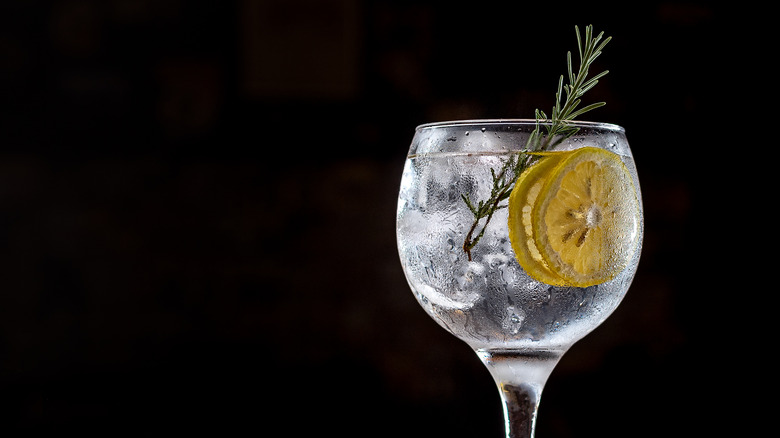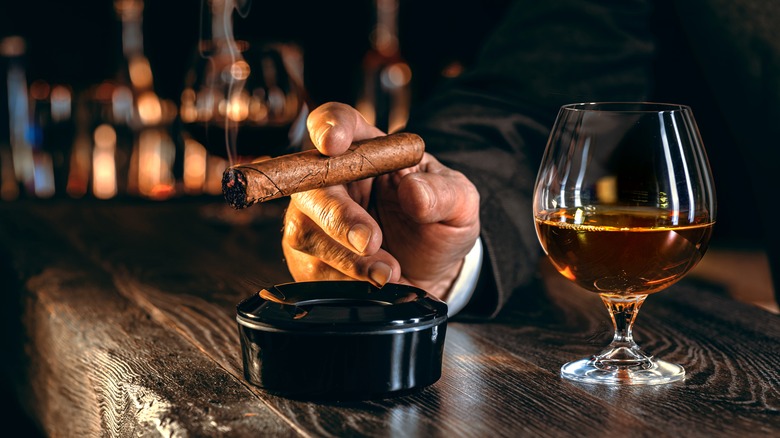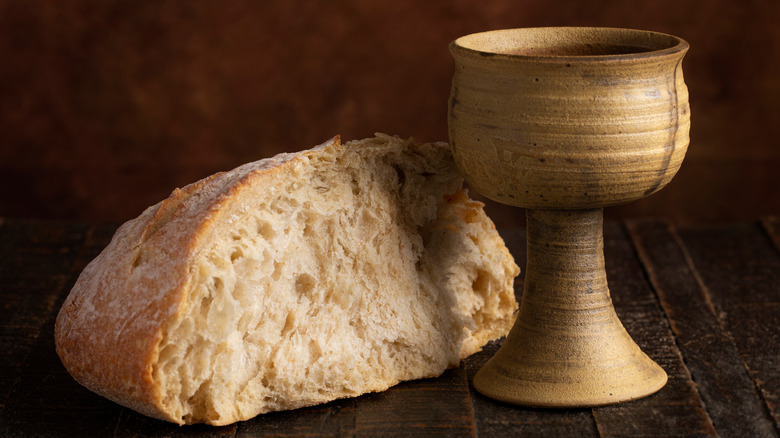The Legal Way You Could Obtain Alcohol During Prohibition
Prohibition — wasn't it all flapper girls and dapper guys in spats, whispering codes through secret doors in chemist shops? Then dancing the night away in hidden clubs while slugging bathtub gin? Because unless you were willing to break the law, there wasn't a dribble of booze to be had — it was the speakeasy or nothing.
Well, yes and no. Because while US prohibition laws were indeed strict, there were sneaky ways around them. But what were those laws in the first place? Essentially, from 1920 to 1933, the US government implemented a ban on the production, sale, and distribution of alcohol. In contemporary times this seems highly draconian, but there were well-intended reasons behind it. According to the Cato Institute, Prohibition had practical intentions. The worry was that booze was creating social ills such as addiction, poverty, and crime. And as pointed out by Wine Folly, people's average alcohol consumption was actually 10 to 14 times what it is today. The government thought that removing access to hooch would prevent ill health, reduce crime, and lower the tax costs of maintaining prisons.
The trouble is that when you ban a product that people want, they'll find a way around it. In this case, it was via the black market production of illegal "moonshine" liquor and the proliferation of underground taverns and clubs known as "speakeasies" (via History). But beyond forbidden gin joints, people used loopholes and exceptions in the law itself to get their mitts on contraband booze.
Here's how you could enjoy hooch during Prohibition
Our perceptions of Prohibition are of it being ultra-strict, but that's not entirely the case. Plenty of people could sip a leisurely glass of brandy at home and not be breaking the law — but how?
Because there were legal ways to obtain liquor — although, naturally, those avenues were abused. For instance, according to Smithsonian Magazine, during Prohibition, your doctor could write you a prescription for drinks like whiskey. This was because a nip of alcohol was seen as a cure for various maladies, from indigestion to asthma to depression. As outlined in an article featured on JSTOR, in 1920s America, three categories of alcohol were seen as having therapeutic purposes: "malt liquors" (beer, ale, stout, and porter), "vinous liquor" (wine), and "spiritous liquors" (whisky, gin, and brandy). That pretty much covers all the bases.
This ended up as a real money-spinner for pharmacists and doctors, with people typically paying $3 or $4 for both the prescriptions and the "medicine" itself. And according to Prohibition, it also resulted in a boom in business for Walgreens, which grew from 20 to 525 stores from 1920 to 1929. Yet this trade also had a dark side. In 1930, an alcoholic tonic known as "Ginger Jake" — laced with the toxic substance TOCP — caused paralysis for around 50,000 Americans (via National Library of Medicine). This mass poisoning mainly affected the poorest people and even prompted a hillbilly jazz song, "Jake Leg Blues."
Farmers and rabbis got special treatment
Yet it wasn't just doctors and pharmacists who were granted a Prohibition loophole. Farmers were also allowed to keep producing wine — as long as it was for their own consumption. But if they were discreet, what was to stop them from playing the system and selling it? In fact, according to Wine Folly, home winemaking increased ninefold during Prohibition. California Vineyards also created a whole business around selling "wine bricks" — compacted boxes of grapes that were shipped to the East Coast. However, as it turned out that typical wine grapes like Pinot Noir and Chardonnay didn't do well on these four-week trips, more robust Alicante Bouschet grapes were planted instead.
Finally, as Smithsonian Magazine points out, it was perfectly legal for priests, ministers, and rabbis to buy wine for the purposes of sacramental rituals, such as Holy Communion. In other words, Prohibition wasn't all bootleggers and bathtub gin — if you had the right profession or knew the right doctor, then a nip of whiskey by the fireplace was completely legit.


